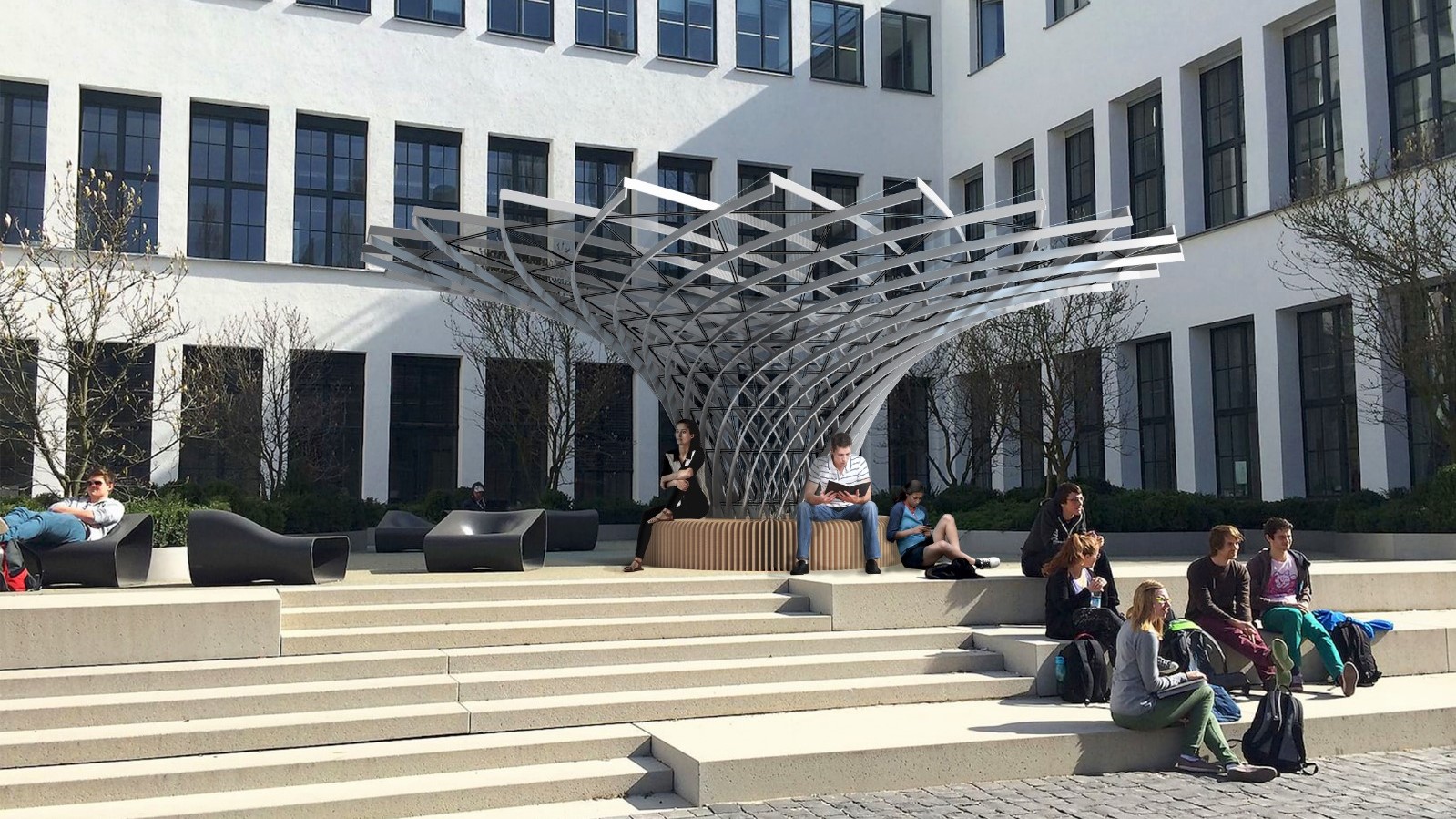
@TUM- June. 2021 – J. Schikore
The Kinetic Umbrella investigates the practical challenges and potentials of elastic transformations at an architectural scale. The design is based on our previous research of Asymptotic Gridshells, which combine simple fabrication and assembly from initially straight lamellas with a strained, form-active structure (Schling, 2018). Advanced structural engineering allows us to match profiles, material and curvature, in order to control the internal energy of the structure and design its kinetic behaviour while maintaining structural integrity (Schikore,2019). The full-scale prototype is currently under construction and will be completed in July 2021. It will be used to measure tolerances, deflections, and internal forces, and verify our theoretical approach and simulation methods. It also serves as a testing ground for transformable cladding systems.
Facts and figures
The project is an international collaboration of the Technical University of Munich (TUM) and the University of Hong Kong (HKU) with industry partners in GFRP manufacturing.
- Dimensions closed: height 6 m, diameter (at base) 3 m
- Dimensions open: height 3 m, diameter (at top) 8 m
- Profile: GFRP rectangular section, 80 x 8 mm
- Total Weight: 500 kg, Weight per m2 (unfolded): 10kg
- Research Team: Jonas Schikore, Eike Schling, Rainer Barthel, Fabian Matella
- Industrial Partners: Röchling-Group, Firbrolux Gmbh
Description of design strategy
The Kinetic Umbrella is designed as a quadrilateral grid, build from slender Glass Fibre Reinforced Plastic (GFRP) lamellas that are connected in two layers through bolts, creating movable uni-axial scissor connections. This facilitates a directed kinetic behaviour from vertical cylindrical tower of 6m height, to a hyperbolic, cantilevering umbrella of 3m height and 8 m diameter. To actuate this movement, linear pneumatic cylinders and vertical cables are simulated and tested in practice. A series of horizontal ring cables fix the unfolded cantilever state. The GFRP profile are selected to enable flexible torsional and uniaxial bending. Due to their asymptotic layout, the lamellas remain upright and resistant to local normal loads.

Relevant references
Schikore, J., A. M. Bauer, R. Barthel, and K.-U. Bletzinger (2019). Large torsion on elastic lamella grid structures. In C. Lázaro, K.-U. Bletzinger, and E. Oñate (Eds.), FORM and FORCE 2019, pp. 788–795. Barcelona: CIMNE.
Schikore, J., E. Schling, and A. M. O. T. Bauer (2021). Kinetics and design of semi-compliant grid mechanisms. In Advances in Architectural Geometry 2020 (AAG 2020), Champs-sur-Marne, France.
Schling, E. (2018). Repetitive Structures. Ph. D. thesis, Chair of Structural Design, Technical University of Munich, DOI: 10.14459/2018md1449869.
